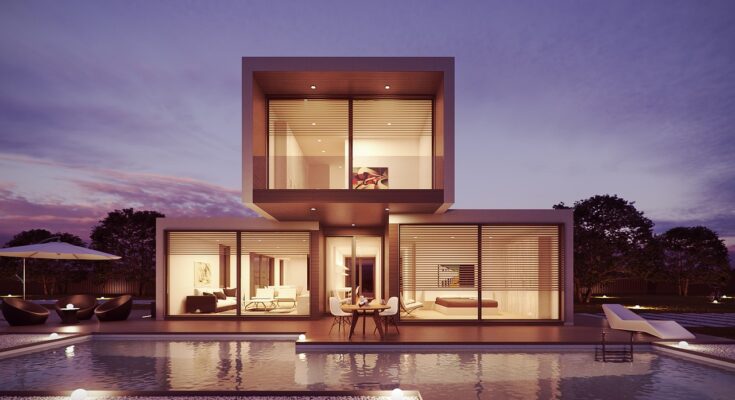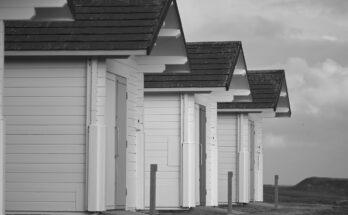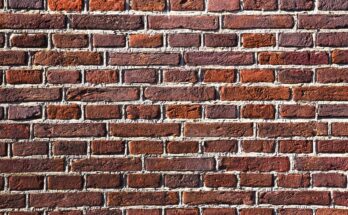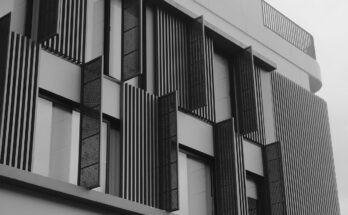ZonaJakarta – If there’s one thing that defines home design in 2025, it’s this: we want comfort, we want function, and we want beauty that actually makes life easier.
After years of shifting work-life habits, climate concerns, and tech breakthroughs, the idea of “home” has transformed—and the way we design our spaces is catching up.
Gone are the overly minimalist, hyper-industrial spaces of the early 2020s. In their place? Homes that breathe, that flex, and that reflect personality without losing practicality.
So, whether you’re planning a renovation, building from scratch, or just daydreaming your Pinterest boards into existence, here are the top five house design trends dominating 2025—and why they’re more than just passing fads.
1. Soft Modernism Takes Over
The sleek, cold minimalism of yesteryear has been replaced by a gentler version of modern design. In 2025, homes are all about clean lines with a warm heart. Picture open floor plans with softer silhouettes, muted color palettes, rounded furniture, and cozy textures that invite you in.
Homeowners are choosing matte finishes over high gloss, natural materials like oak and clay over plastics and chrome, and organic shapes over rigid geometry. The result? Spaces that feel contemporary but deeply livable—modern, but without the sharp edges.
This trend isn’t about going back in time; it’s about humanizing modern living with warmth and soul.
2. Biophilic Design Goes Big
Nature is no longer just something you view from your window—it’s now part of the design blueprint itself. Biophilic design, the art of bringing the outdoors in, is taking center stage.
From living green walls and indoor gardens to homes designed with full glass façades, skylights, and even indoor ponds, 2025 is all about nurturing a stronger bond with the natural world.
Expect to see earthy tones like moss green and terracotta, materials like rattan and bamboo, and entire rooms dedicated to plant care. It’s more than a look—it’s a wellness movement. Homes are being designed not just for aesthetic pleasure, but to support mental clarity, reduce stress, and boost mood through natural connection.
3. Smart Homes, Seamlessly Integrated
The smart home revolution isn’t new—but this year, it’s getting smarter and more subtle. Instead of obvious tech panels or clunky devices, homes in 2025 are baking smart features directly into the design, with voice-activated lighting, hidden speakers, app-synced climate systems, and adaptive glass that tints automatically with the sun.
Designers are blending tech into the background, allowing homeowners to enjoy cutting-edge functionality without sacrificing style. Think kitchen counters with built-in wireless charging, bathrooms that learn your preferred shower temperature, and AI-powered appliances that anticipate your needs.
The keyword here is invisible innovation—your home knows what you need before you ask, and it doesn’t scream “gadget.”
4. Sustainable Living Becomes the Standard
Sustainability is no longer a niche priority—it’s a must-have pillar of good design. In 2025, more homeowners are asking not just “how does this look?” but “how does this last?”
Solar panels are becoming a default in many new builds, but the trend goes deeper: think reclaimed materials, rainwater harvesting systems, energy-efficient layouts, and passive cooling design that minimizes the need for AC.
Even the materials we’re choosing reflect the shift—low-VOC paints, recycled insulation, and carbon-neutral cabinetry are becoming the new normal. And thanks to better design education and broader access, eco-conscious homes are no longer just for the ultra-wealthy—they’re going mainstream.
5. Multi-Functional Spaces for Modern Life
Our homes are doing more than ever before—and they’re being designed with that in mind. 2025 is the year of the purposeful flex space. Think home offices that double as guest rooms, media lounges that transform into yoga studios, and garages that moonlight as maker spaces.
The key isn’t just to have more rooms—it’s to have smarter ones. Design now favors built-in storage, modular furniture, and sliding partitions that give homeowners the ability to reconfigure their space depending on the hour or the mood.
As remote work remains common and hobbies reclaim their place in everyday life, the new home must be ready to wear multiple hats—and wear them well.
Final Thought: Function Meets Feeling in 2025
This year’s design trends aren’t just about what looks good—they’re about what feels right. 2025 homes are smarter, softer, greener, and more flexible than ever before. They embrace nature, champion sustainability, and prioritize the people who live in them.
So whether you’re building new, renovating, or simply rearranging, remember: the best design in 2025 isn’t just trendy—it’s thoughtful, intentional, and deeply personal. (*)




